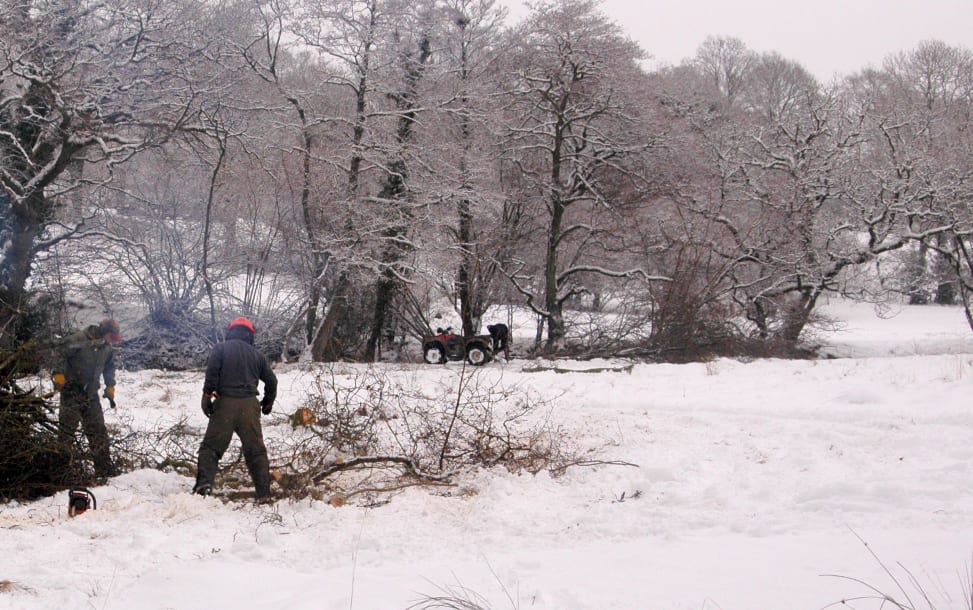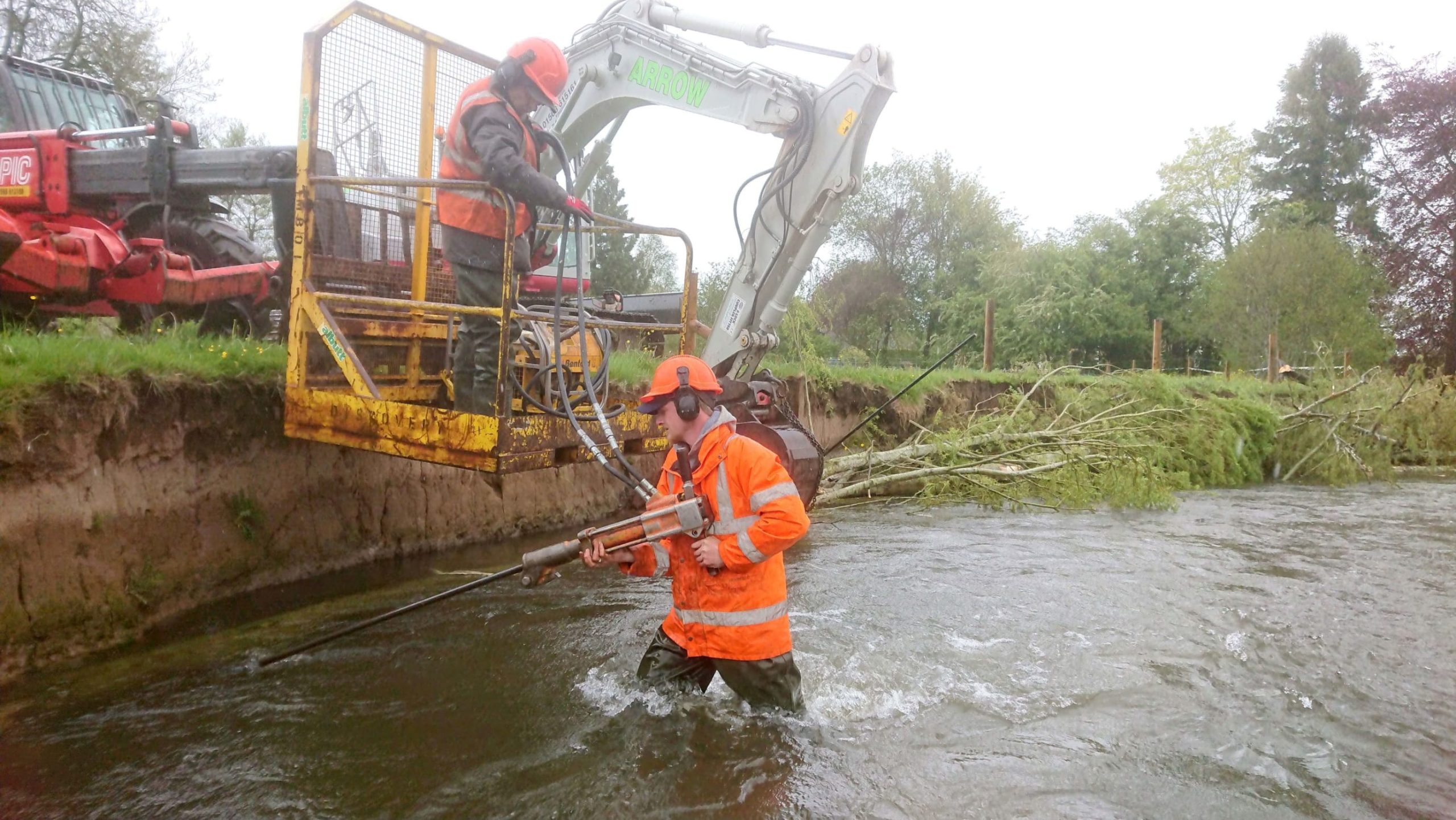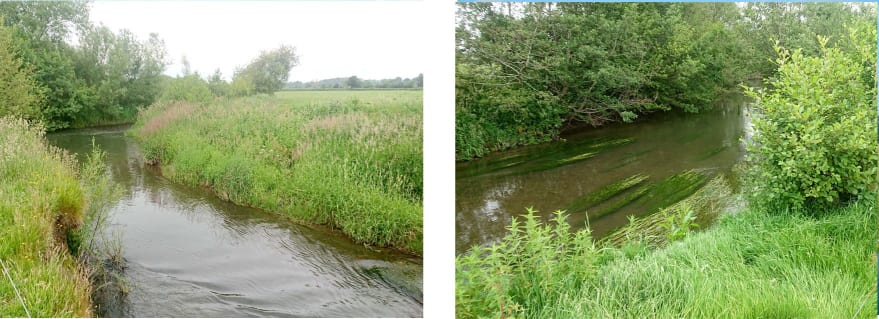Wednesday 30th June, 2021
There is nothing more attention-grabbing than a disaster story, especially when it comes to the environment. The vast majority of recent reports on UK rivers, the TV documentaries and news items, newspaper articles, social media, blog and forum posts have nearly all told of doom and disaster. Pollution, algal blooms, declining water quality and biodiversity. Few fish or wildlife anymore and even less hope.
While no-one should be under the misconception that everything is well, there are some positive stories in amongst the seemingly endless stream of bad news. And it is perhaps even more important that such stories are told in these COVID-afflicted times.
Slow improvements are, of course, nowhere near as newsworthy as instant calamities. While declining water quality and catastrophic pollution events have been the focus of much attention over the past year, the Foundation has moved forward with its river restoration programme, repairing damaged habitat on tributary streams in both Wye and Usk catchments.
Habitat restoration is slow improvement. It takes time for a stream to recover from damage caused by unrestricted livestock incursion and resultant excessive erosion. Unnaturally wide, shallow sections with no bankside vegetation and poor ecology can sometimes take ten or more years to return to the narrower, deeper state rivers naturally take. Eventually, however, the natural ecology restores and the aquatic flora and fauna return.
The Foundation’s operations team restoring the habitat on a section of the middle river Arrow in May this year. Here, Lee and Blake are pinning willow into an erosion point before they fence off the section to livestock. The natural regrowth will reinforce the bank and return the river to a much more “natural” state.
We reported last year on the loss of much of the ranunculus in the main stem of the Wye and the threat this poses to the river’s ecology. Damaged initially by a sequence of extreme floods the previous winter, the recovery of this SAC-designated plant was then hindered by the thick, suspended algal blooms (blocking out light) during the peak growing season and by smothering from filamentous algae. When water contains excessive levels of phosphorus, algae dominate.
This ranunculus is a “keystone species” on which many invertebrates, fish and birds depend for both habitat and food. The large beds of the plant also filter and clean water passing by and many of invertebrates that live in the fronds eat algae. Any work we can do to aid the recovery of this precious plant is therefore beneficial for the rivers’ overall ecology.
Ranunculs is a “keystone species” for rivers such as the Wye. Many invertebrates, fish and birds rely on it for their survival. Although the amount of ranunculus has decreased significantly in the Wye over the past two years, given the chance it can recover. (Photo: Adam Fisher)
Back in 2013 we came across a 900 metre unfenced section of the river Arrow near Leominster badly damaged by the livestock that had free access to it. Wide and shallow, it contained none of the ranunculus this Borders tributary is known for. Fish numbers in the section were depleted too. Juvenile salmon and adult trout, grayling, dace, chub, eels and pike are all normally present in good numbers in the lower reaches of the Arrow.
With Environment Agency funding and the help of the farmer, the following year we fenced off the affected stretch and installed willow revetments to shore up the worst of the erosion. The river was then left to recover by itself. In June this year Louis, our Head of Operations, visited the site and was delighted with what he saw. In the seven years since he last stood on its banks, the section had re-naturalised. It was narrower, deeper and lined with bankside vegetation, providing exactly the kind of habitat fish need to thrive. But just as importantly, the ranunculus within the stream had returned.
Above: The section of the lower river Arrow as we found it in 2013: the banks were heavily grazed and eroding excessively. Mostly wide and shallow as a result, the ecology of the river was poor. Ranunculus was absent (only filamentous algae present) and with no in-stream or bankside cover, fish populations were low.
Below: The same section seven years after restoration work. The river has narrowed, deepened and provides the ideal habitat for a range of fish species. Just as importantly, the ranunculus has returned (especially visible in the photo below right), which will provide a future source for the regeneration of the lost ranunculus beds of the main Wye.
Once the Wye’s water quality issues have been resolved (and this will take time and effort too), streams such as the Arrow will be vital to the recovery not just of fish populations but the wider ecology as well. Seeds and displaced fronds from thriving plants in these tributaries will be a vital source of natural regeneration in the main stem of the Wye, a river whose once copious ranunculus beds have now all but disappeared in many areas. In addition to resolving the excess phosphorus and algal issue, it is Foundation’s job to restore and maintain the condition of the habitat in the Wye’s tributaries so that this recovery can happen.
Some may read this report and think the restoration of a section of the Arrow is a drop in the ocean in comparison to the problems facing the Wye catchment overall. However, once these problems have been resolved, the extent and speed of the main stem’s recovery will be largely dependent on the health of the tributary network. If these streams are in good order (something that is never guaranteed), the Wye’s recovery will be faster and more widespread. The Foundation has completed habitat improvement in over 400km of tributary stream since our inception.
In the environmental world and certainly in fishery management, the importance of this type of long-term work is sometimes lost amongst a clamour for fast gratification. Yet this is how the natural recovery of the Wye, its fish stocks and the aquatic environment will happen. Habitat restoration may take a while, but the benefits are there for all to see.
Read more about habitat restoration
Please Support Our Habitat Restoration Work

The Foundation and its operations team carry out habitat restoration throughout the year. It is tough work that is done in all weather conditions by dedicated people.
Please help us continue to restore habitats in both the Wye and Usk by making a donation to our projects. The benefits of this work will be felt across both catchments for years to come.
Thank you.




